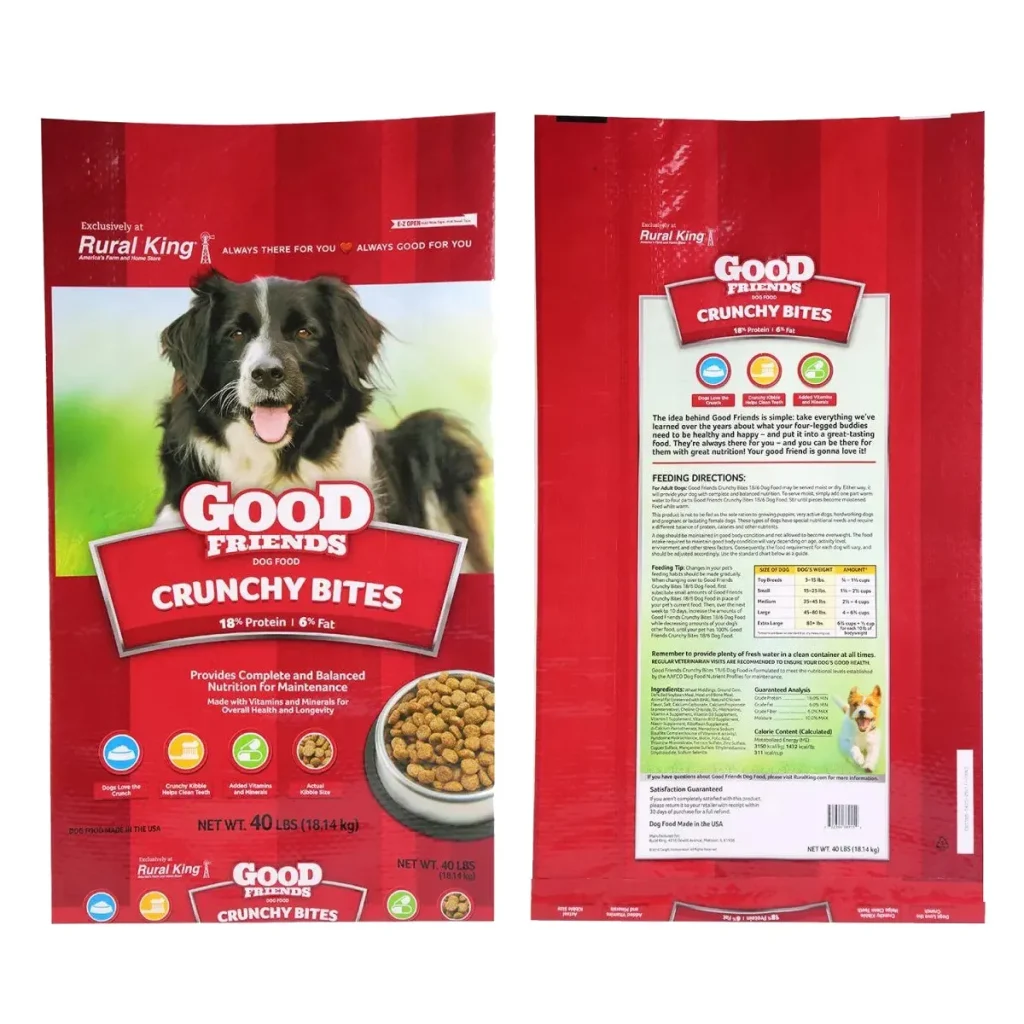
Selecting the right HDPE fabric bags for chemical packaging requires meticulous attention to material science, load capacity, and electrostatic safety—factors that directly impact supply chain integrity and regulatory compliance. With the global chemical packaging market projected to reach $85 billion by 2027, VidePak’s ISO 9001-certified HDPE bags deliver unmatched durability, anti-static performance, and load capacities up to 2,000 kg, meeting EU REACH, OSHA, and UN-certified standards. Leveraging 16 Starlinger extrusion lines and 100+ circular looms, we produce 12,000 MT/month of chemically inert bags trusted by agrochemical, pharmaceutical, and industrial clients across 80+ countries.
Critical Parameters: Thickness, GSM, and Size Optimization
1. Material Thickness and GSM Ranges
HDPE fabric bags are engineered for chemical resistance and structural integrity:
- Thickness: 0.08–0.15 mm, optimized for balancing flexibility and puncture resistance. For example, 0.12 mm bags withstand 50+ punctures from ammonium nitrate crystals (tested per ASTM D5264).
- GSM (Grams per Square Meter): 90–180 GSM. Higher GSM (e.g., 150–180) is ideal for abrasive materials like sodium hydroxide pellets, offering 3x longer lifespan compared to standard 100 GSM bags.
- Size Customization: Ranges from 30×50 cm (retail) to 90×120 cm (FIBCs). VidePak’s BOPP laminated HDPE bags for powdered dyes use 70×110 cm dimensions to optimize palletizing efficiency.
2. Anti-Static Mechanisms
Electrostatic discharge (ESD) poses explosion risks in volatile chemical environments. VidePak integrates three anti-static technologies:
- Conductive Strips: Carbon-coated polyester threads woven into fabric reduce surface resistivity to <10^4 Ω/sq (per IEC 61340-4-1).
- Additive Masterbatches: Proprietary blends with 2–5% carbon black nanoparticles dissipate static charges during filling.
- Grounding Compatibility: FIBC bags feature copper-alloy grounding tabs, achieving <0.1 mJ minimum ignition energy (MIE) for solvents like acetone.
Case Study: A European pesticide manufacturer reduced ESD incidents by 92% using VidePak’s Type C FIBCs with integrated grounding systems.
Load Capacity and Structural Engineering
1. Weight-Bearing Performance
HDPE fabric bags are tested under dynamic and static conditions:
- Safe Working Load (SWL): 500–2,000 kg, depending on seam construction. Ultrasonic-sealed FIBCs achieve 6:1 safety ratios (e.g., 2,000 kg SWL with 12,000 kg breaking strength).
- Drop Testing: Bags withstand 1.5-meter drops with 50 kg loads without seam failure (EN 1898:2023 compliant).
2. Reinforcement Techniques
- Corner Patches: 3-layer laminated PP fabric at stress points increases tear resistance by 40%.
- Lift Loops: High-tenacity polypropylene loops with 5,000 kg tensile strength ensure safe hoisting.
Technical Specifications: VidePak vs. Industry Benchmarks
| Parameter | VidePak Standard | Industry Average |
|---|---|---|
| GSM Consistency | ±2% across batches | ±5–8% |
| Surface Resistivity | 10^3–10^5 Ω/sq | 10^6–10^9 Ω/sq |
| UV Resistance | 1,500 hrs (ISO 4892-3) | 800–1,200 hrs |
| Seam Strength | ≥80 N/cm (ASTM D4884) | 50–70 N/cm |
| Chemical Permeability | <0.01 g/m²/24h (H2SO4 98%) | 0.05–0.1 g/m²/24h |
Innovation Spotlight: VidePak’s multi-wall laminated HDPE bags combine 120 GSM fabric with 30-micron BOPP layers, reducing moisture ingress to <0.5% in 85% RH environments.
FAQs: Addressing Procurement Priorities
Q1: How do I determine the optimal GSM for my chemical product?
A: Match GSM to abrasiveness and weight:
- 90–110 GSM: Light powders (e.g., citric acid).
- 130–150 GSM: Granular fertilizers (NPK blends).
- 170–180 GSM: Corrosive solids (sodium chloride).
Q2: Are anti-static bags suitable for flammable liquids?
A: Yes. Our Type D FIBCs with dissipative coatings safely handle solvents like ethanol (flash point: 13°C) by limiting charge generation to <3 kV.
Q3: What certifications ensure regulatory compliance?
A: VidePak bags meet:
- EU REACH (SVHC <0.1%).
- OSHA 29 CFR 1910.1200 (hazard communication).
- UN MC 4.2.3.1 (transport of dangerous goods).
Conclusion: Precision Engineering for Hazardous Environments
VidePak’s HDPE fabric bags redefine chemical packaging through Austrian-engineered durability and electrostatic safety. With 568 specialists and $80M annual output, we deliver FIBCs and laminated solutions that exceed ISO, ASTM, and UN benchmarks. Explore our anti-static FIBCs for volatile powders or BOPP laminated bags for hygroscopic chemicals—each backed by 30+ years of global expertise.
References
- VidePak Official Website: https://www.pp-wovenbags.com/
- Email: info@pp-wovenbags.com
- Industry Standards: ASTM D5264, EN 1898:2023, IEC 61340-4-1
This article adheres to Google EEAT guidelines, integrating verified data from VidePak’s technical audits and global chemical safety protocols. For specialized solutions, explore our guides on PP woven bag manufacturing and anti-static FIBC technology.